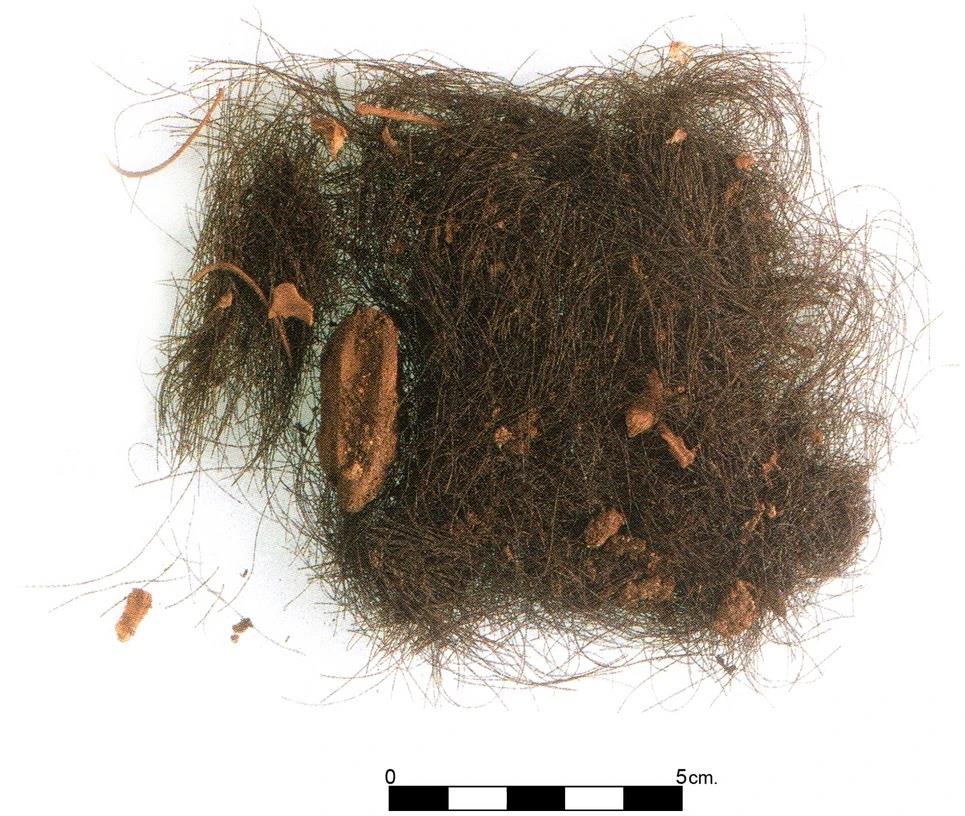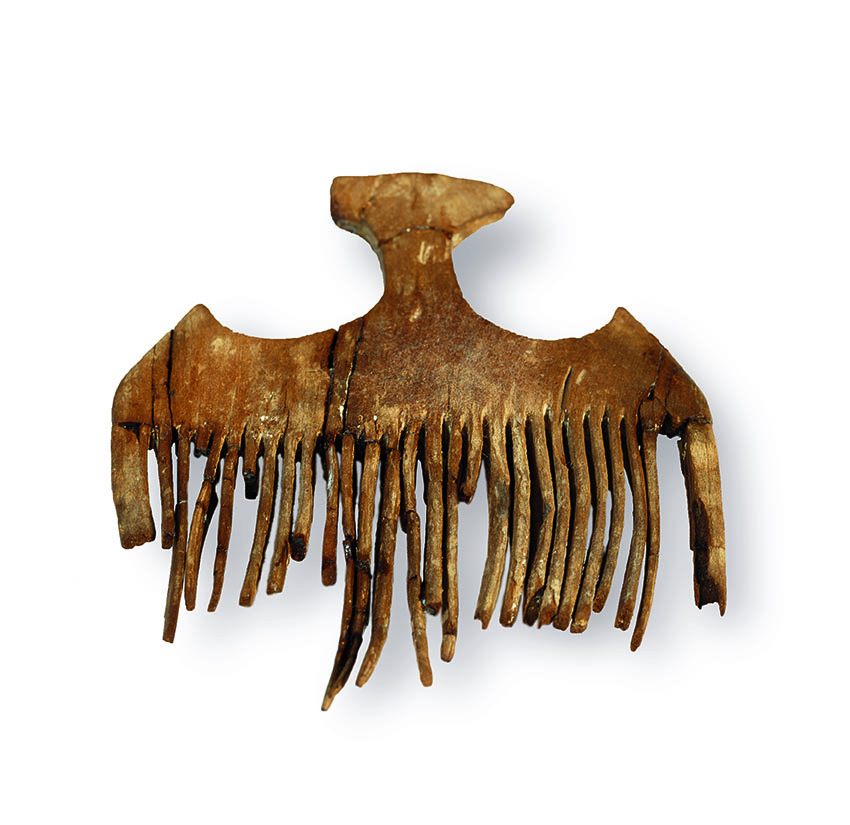 Discovered 28 years ago, the exceptional finds in the Cova des Càrritx continue to provide valuable information about the habits and customs of the prehistoric population of our island. The unusual discovery, at the time, of human hair in this burial cave from the Naviform period has provided a unique opportunity to delve into the medicinal practices and rituals of the Talayotic people. The result: the first direct evidence of the use of psychoactive substances found in humans in Europe.
Discovered 28 years ago, the exceptional finds in the Cova des Càrritx continue to provide valuable information about the habits and customs of the prehistoric population of our island. The unusual discovery, at the time, of human hair in this burial cave from the Naviform period has provided a unique opportunity to delve into the medicinal practices and rituals of the Talayotic people. The result: the first direct evidence of the use of psychoactive substances found in humans in Europe.
The team responsible for this study has been Elisa Guerra, University of Valladolid; Cristina Rihuete, Rafael Micó, Roberto Risch and Vicente Llull from the Autonomous University of Barcelona; and Hermann M. Niemeyer from the University of Chile. The team published "Direct Evidence of Multiple Drug Use in Bronze Age Menorca (Western Mediterranean) from Human Hair Analysis" in Scientific Reports, an open access journal that disseminates original research from all over the world.
This work has provided direct evidence for the use of drug plants and, most interestingly, has revealed the use of multiple psychoactive species 3,000 years ago. In a sample of the hair from Cova des Càrritx they detected, among others, ephedrine, atropine and scopolamine. The researchers concluded that the consumption of these three substances was continuous and prolonged over time.
Combing the dead
Discovered intact by speleologists Pere Arnau and Josep Márquez in 1995, the excavations and subsequent investigation of the Cova des Càrritx was carried out by ASOME (Research Group in Mediterranean Social Archaeology) as part of the Autonomous University of Barcelona, thanks to the sponsorship of the Consell Insular de Menorca and the Rubió Foundation. These works allowed for the reconstruction of the ritual that involved the combing, dying and cutting of locks of hair, as well as the
discovery and funerary applications of several objects.

And what did this singular ritual consist of? At the Cova des Càrritx, but also at other burial sites in Menorca (e.g., Cova des Pas, some of the hypogea at the Calescoves cemetery, Biniedrís cave, the naveta of Es Tudons), there is evidence that during a 300-year period before the final use of these tombs (between ca. 1100 and 800 cal BCE, according to radiocarbon dating results) a singular post-mortem treatment took place involving part of the deceased individuals’ hair.
After the corpses were deposited, strands of hair were intentionally dyed or anointed red in situ. Some locks of hair were combed, cut out, and finally introduced into tubular containers made of wood or antler provided with bases and lids which sealed the hair strands inside. The lids, often
decorated with carved series of perfect concentric circles, held opposing perforated lugs that served to secure the containers with the aid of strings. Once the ritual was completed, the tubes containing hair were usually left nearby the deceased. The hair strands analyzed were found inside a container from Chamber 5.
Psychoactive substances
Hair testing has revealed itself as an effective method to detect the consumption of certain drugs and is a widely-accepted technique in the field of Forensic Toxicology. The study of drug use in Prehistoric Europe has mainly been based on indirect evidence, such as archaeobotanical remains of drug plants, artistic depictions, and occasionally the detection of drug alkaloids in certain artefacts. The unusual finding of human hair in the Cova des Càrritx provided the opportunity to obtain direct evidence for the use of plant drugs by Late Bronze Age people.
Tropane alkaloids are highly psychoactive, exerting multiple effects on the central nervous system. Rather than just being hallucinogens, atropine and scopolamine belong to the group of deliriant drugs, i.e., they induce delirium characterized by extreme mental confusion, strong and realistic hallucinations, disorientation, alteration of sensorial perception, and behavioral disorganization. Out-of-body experiences and a feeling of alteration of the skin, as if growing fur or feathers, are usually reported. In Europe, tropane containing Solanaceae have a long history of use as medicines, poisons, and intoxicants, but they have achieved their most notorious reputation in association with European witchcraft during the Middle Ages/Early Modern period. The powerful mental and behavioral effects of these plants have made them indispensable ingredients in the botanical preparations used by shamans worldwide in rituals for divination, prophecy, and ecstasy.
On the other hand, ephedrine exerts a sympathomimetic action similar to that of adrenaline, i.e., excitement and enhancement of mental alertness and physical activity, reduction of fatigue, improvement of concentration, and suppression of hunger. It has also served as a remedy to treat colds, asthma, and hay fever among other medical purposes.
Shaman hypothesis
The researchers emphasize that the psychoactive substances detected in this study are not suitable for alleviating the pain involved in severe palaeopathological conditions attested in the population buried in the Cova des Càrritx, such as periapical abscesses, severe caries and arthropathies. Considering the potential toxicity of the alkaloids found in the hair, their handling, use, and applications represented highly specialized knowledge, according to Guerra's team. That’s why those responsible for the study point out that the hair analyzed could be from a shaman, since he was able to control the side effects of plant drugs through ecstasy that made diagnosis or divination possible.
They also establish a parallelism with the series of concentric circles carved on the lids of the tubes found in the Cova des Càrritx. Given the mydriatic effect of the alkaloids detected in the hair samples, the researchers interpret these circles as eyes, which somescholars have considered as a metaphor of inner vision, in some cases related to altered states of consciousness and visionary experiences under the influence of hallucinogens. The recent discovery that two Late Pre-Columbian ceramic containers from the Central Arkansas River Valley which tested positive for atropine, were decorated with spiral motifs supports this interpretation.
The team headed by Guerra adds that by 800 BC, populations of the Balearic Islands underwent a transformation of their social structures. Archaeological evidence points to population growth, the abandonment of burial sites, and a slight decline in extra-island contacts. In this context, the researchers believe that it is possible that, in the Cova des Càrritx, individuals reluctant to abandon ancient traditions hid a collection of ritual objects belonging to certain members of the community, possibly shamans, in the hope that the former social order could be re-established in the future.